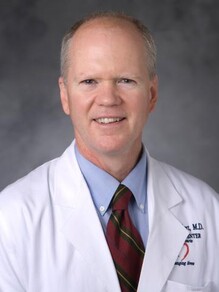Sudden cardiac arrest -- when the heart stops beating abruptly -- is especially shocking in young people. That’s why it’s important to heed warning signs and undergo routine screenings before suiting up. Here, James P. Daubert, MD, a Duke electrophysiologist who specializes in sports cardiology, discusses red flags as well as options for athletes with heart conditions who want to stay in the game.
Causes of Sudden Cardiac Arrest in Young Athletes
Most cases of sudden cardiac arrest in young athletes are due to undiagnosed and uncommon heart diseases. These conditions fall into several categories.
- Genetic heart diseases are inherited or caused by a genetic mutation. They include electrical disorders of the heart that can cause life-threatening arrhythmias like ventricular tachycardia and ventricular fibrillation. These make the heart pump erratically or not at all. Other arrhythmias in this category include long QT syndrome, Brugada syndrome, and catecholaminergic polymorphic ventricular tachycardia (CPVT).
- Genetic cardiomyopathies, which affect the heart’s muscle tissue, can also cause dangerous arrhythmias. They include hypertrophic cardiomyopathy and arrhythmogenic right ventricular dysplasia / cardiomyopathy (ARVD/C).
- Certain congenital heart problems -- heart defects that are present at birth -- can induce sudden cardiac arrest. For example, an anomalous coronary artery refers to a blood vessel that is attached to or travels through the wrong area of the heart. During strenuous exercise, increased blood flow in nearby blood vessels can kink or squeeze the anomalous coronary artery and block blood flow to the heart.
- Other causes of sudden cardiac arrest include inflammation of the heart (myocarditis), connective tissue disorders that increase risk of aortic aneurysms, and commotio cordis. This is the medical term for a blow to the chest that disrupts the heart's electrical cycle.
Risk Factors
As an athlete, the risk of sudden cardiac arrest is considerably greater for males and athletes of African descent (possibly due to the higher risk of cardiac arrest in Black people), Dr. Daubert said. Research shows basketball players are at the highest risk, potentially because they are often taller than average. Extreme height can also signal a connective tissue disorder like Marfan syndrome.
Concerning Symptoms
In many cases, there are few or no signs beforehand to warn of sudden cardiac death in young athletes. However, any athlete who experiences chest pain, shortness of breath, excessive fatigue, fainting, or lightheadedness, especially in relation to exercise, should be thoroughly evaluated before returning to sports because these symptoms can signal a heart problem.
Routine Screening
Regardless of your sport, age, and level of play, every athlete should undergo a routine physical before you begin playing and yearly thereafter. Your provider will listen for abnormal heart sounds called murmurs, measure your vitals and blood pressure, and look for other physical concerns. Make sure you discuss your family history, especially if heart disease runs in your family or if you have a relative who died unexpectedly before age 50, since genetic heart disease could be a factor.
Advanced Evaluation
Athletes who have signs, symptoms, or a known or potential family history of certain heart conditions should undergo additional testing. According to Dr. Daubert, that may include an electrocardiogram (EKG or ECG), which charts your heart’s electrical signals so doctors can identify arrhythmias. Your doctor may also recommend an echocardiogram (an ultrasound of the heart), an MRI scan, or a wearable heart monitor. You may also need an exercise test, which requires running on a treadmill or riding a stationary bike to see how your body responds to activity.
Options for Athletes with Heart Disease
A sports cardiologist can help young athletes with heart disease who want to stay in the game. Duke’s dedicated sports cardiology clinic focuses on optimizing your ability to exercise and participate in sports while minimizing your health risks. Treatment options, such as medications, catheter ablations, implantable cardioverter defibrillators (ICDs), pacemakers, and more, may be recommended.
“Your regular doctor might say, ‘no, you can't keep playing,’” Daubert said. “If so, find a sports cardiology specialist who deals with these issues all the time and is more open to working with athletes to try and keep them on the field safely.”
Training, AEDs, and CPR Save Lives
Even with all the proper precautions, sudden cardiac arrest in young athletes will happen on rare occasions. That’s why Dr. Daubert and his Duke colleagues host a yearly symposium to educate community providers. They also recommend having an automated external defibrillator (AED) present at competitions and practices, as well as someone trained to use the portable machine, which can diagnose and treat dangerous arrhythmias. Finally, he encourages coaches, fellow athletes, and parents to learn hands-only CPR.




